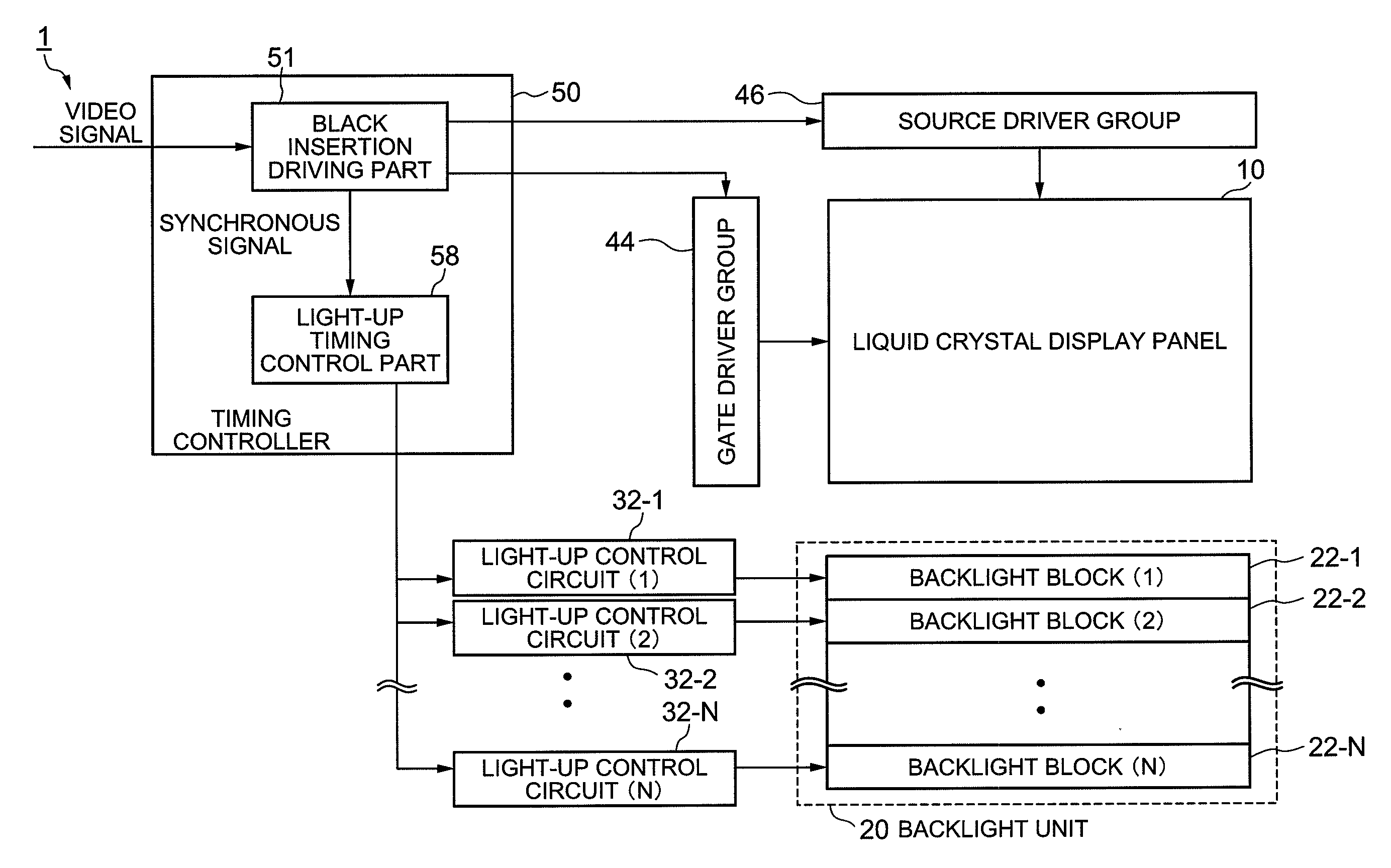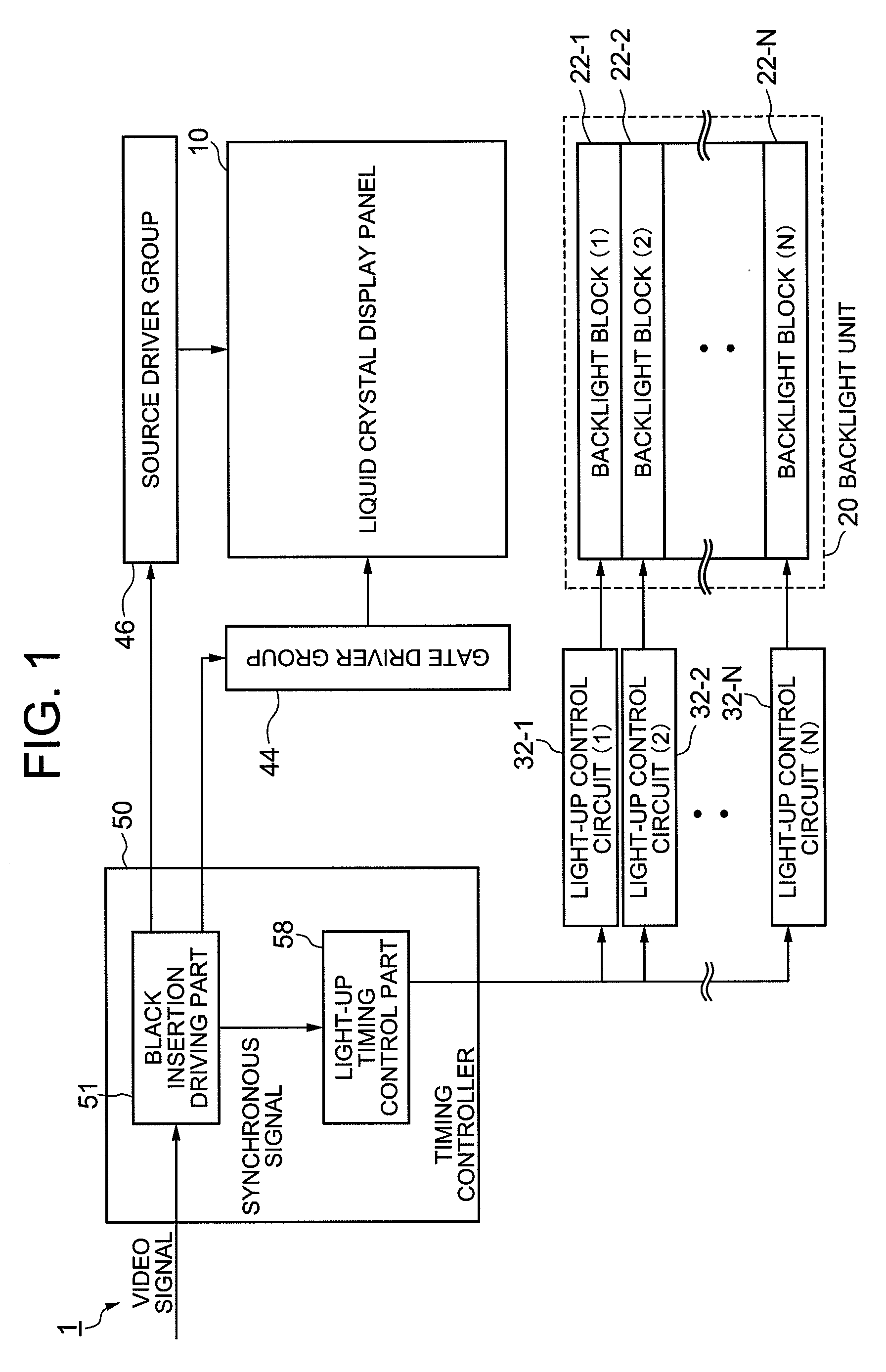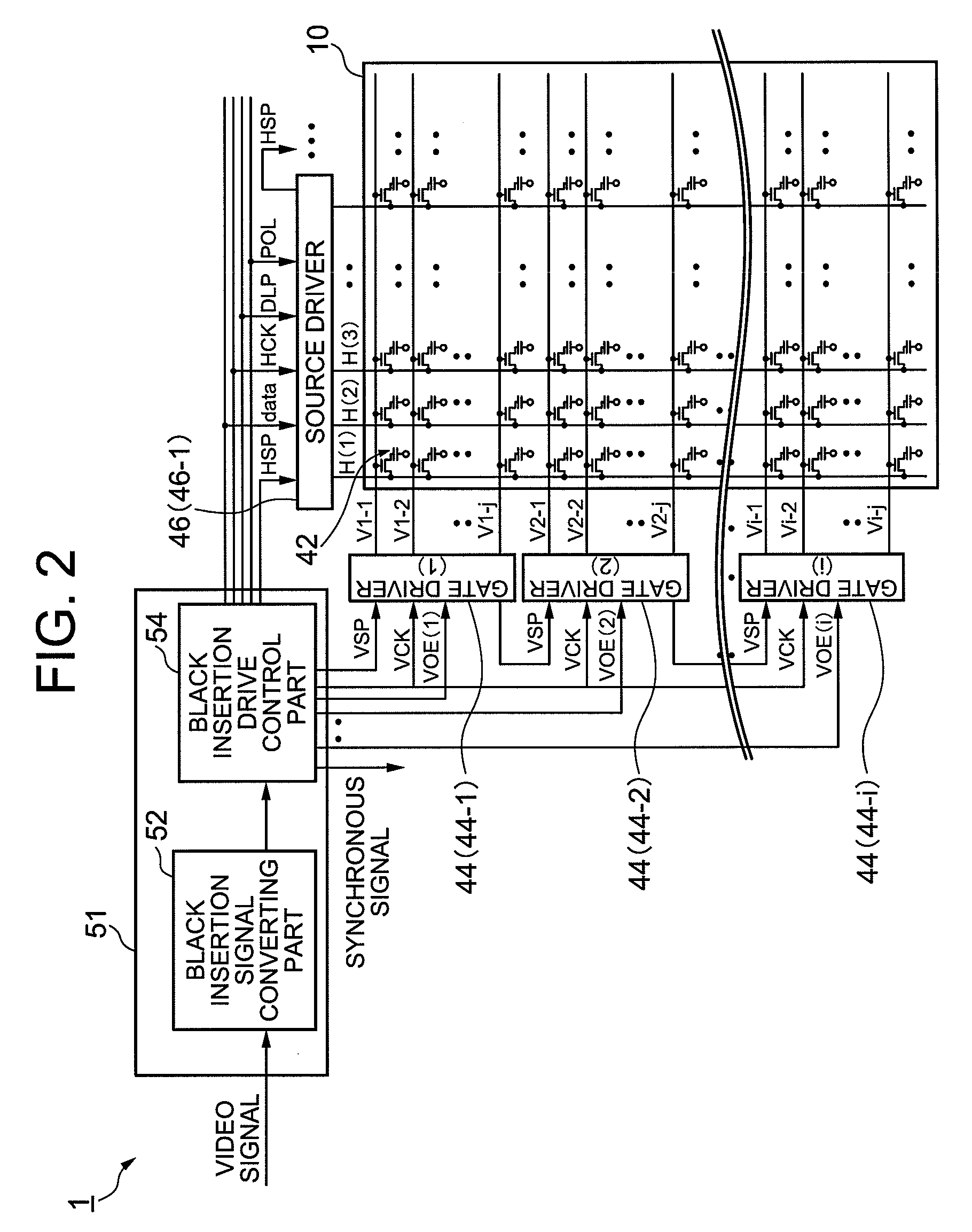Display panel control device, liquid crystal display device, electronic apparatus, and display panel drive control device
- Summary
- Abstract
- Description
- Claims
- Application Information
AI Technical Summary
Benefits of technology
Problems solved by technology
Method used
Image
Examples
first exemplary embodiment
Effects of First Exemplary Embodiment
[0269]Following effects are obtained with the exemplary embodiment described above.
[0270]This exemplary embodiment includes, on the back face of the liquid crystal panel, the backlight that is divided into backlight blocks in parallel to the line sequential scanning direction of the liquid crystal display panel, and each of the backlight blocks can be individually lighted up and off. In this exemplary embodiment, performed is the scanning backlight drive which sequentially lights up and off each light source block of the backlight according to the scanning timing of the liquid crystal display panel.
[0271]The divided light source blocks for achieving the scanning backlight drive are so structured that the light of the light-up block leaks at least to the neighboring backlight block.
[0272]A signal obtained by inserting a black signal or a dark signal (“black signal” is used hereinafter as a general term) to an input video signal by a specific propo...
second exemplary embodiment
[0315]Next, a second exemplary embodiment of the invention will be described by referring to FIG. 39 to FIG. 43. Hereinafter, explanations of substantially the same structures as those of the first exemplary embodiment are omitted, and only the different points are described. FIG. 39 is a block diagram showing an example of the second exemplary embodiment of the liquid crystal display device according to the invention.
[0316]In this exemplary embodiment, black display scanning is performed in one of sub-frame periods out of those obtained by dividing one frame period, and video display scanning is performed in the other sub-frame period.
[0317]Specifically, a liquid crystal display device 300 of this exemplary embodiment is capable of performing double-speed driving. As shown in FIG. 39, the liquid crystal display device 300 is configured, including: a liquid crystal display panel 310 in the same structure as that of the first exemplary embodiment, a gate driver group 344; a source dr...
third exemplary embodiment
[0348]Next, a third exemplary embodiment of the invention will be described by referring to FIG. 44. Hereinafter, explanations of substantially the same structures and the processing procedures as those of the first exemplary embodiment are omitted, and only the different points are described. FIG. 44 is a block diagram showing an example of the third exemplary embodiment in which a liquid crystal display device having the display panel control device of the invention is applied to a broadcast receiving device.
[0349]As shown in FIG. 44, a broadcast receiving device 500 is configured, including a liquid crystal display device 574 that has the same structure as any of the liquid crystal display devices according to the above-described exemplary embodiments.
[0350]The broadcast receiving device 500 is configured, further including: an analog tuner 502 used for terrestrial analog broadcasting; a demodulator 504 which demodulates signals from the analog tuner 502; a digital tuner 512 used...
PUM
 Login to View More
Login to View More Abstract
Description
Claims
Application Information
 Login to View More
Login to View More - R&D
- Intellectual Property
- Life Sciences
- Materials
- Tech Scout
- Unparalleled Data Quality
- Higher Quality Content
- 60% Fewer Hallucinations
Browse by: Latest US Patents, China's latest patents, Technical Efficacy Thesaurus, Application Domain, Technology Topic, Popular Technical Reports.
© 2025 PatSnap. All rights reserved.Legal|Privacy policy|Modern Slavery Act Transparency Statement|Sitemap|About US| Contact US: help@patsnap.com



